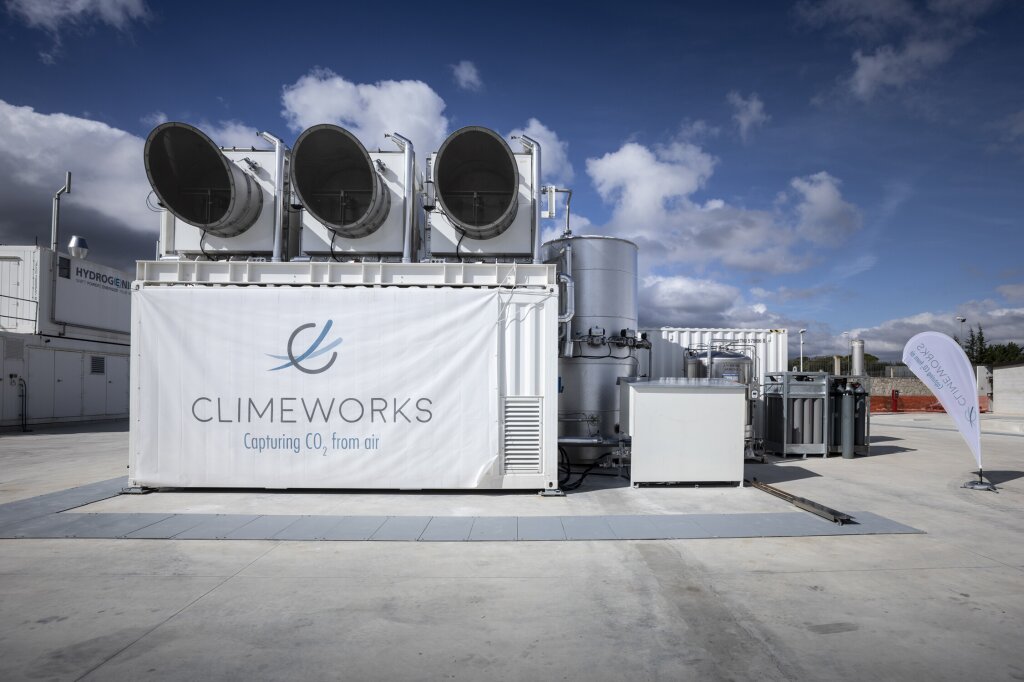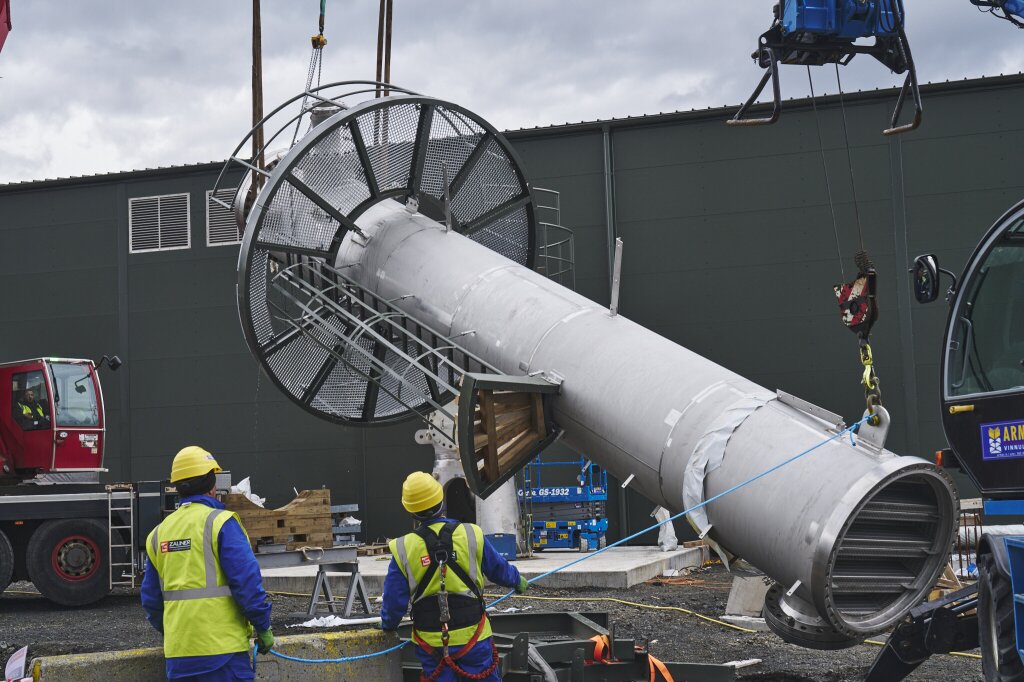
A partnership proving carbon removal is here to stay
While the world debates climate targets and carbon budgets, some companies are already doing the heavy lifting. Among them are Climeworks and Svante, who’ve just completed a game-changing phase of testing for Gen 3 Direct Air Capture (DAC) systems—proving not only performance but long-term reliability in real-world conditions. It’s the kind of technical leap that gives substance to the buzz around carbon removal.
The collaboration centers on structured adsorbents developed by Svante and deployed in Climeworks’ latest Gen 3 technology. The outcome? Double the CO₂ capture capacity and half the energy use, verified across more than 1,300 operating cycles. In an industry that demands scalability, consistency, and cost-efficiency, that’s not just progress—it’s a statement.
>> RELATED: Real-world Testing Proves Climeworks’ Gen 3 Efficiency Leap With Svante’s Structured Adsorbents

What Gen 3 performance really means
Between May 2024 and January 2025, Climeworks ran full-scale tests of Svante’s structured adsorbent technology at its test facility in Muttenz, Switzerland. This wasn’t a lab experiment. The system was put through conditions ranging from freezing cold to high humidity, and it held its own, performing within a +/-5% margin of predictive models.
“You can’t overstate the importance of rigorous testing before building,” said Jan Wurzbacher, Co-CEO of Climeworks. “With this proof in hand, we can confidently say that our Gen 3 tech is engineered for real-world conditions and real-world impact.”
Structured adsorbents are what make this breakthrough possible. Unlike traditional materials, Svante’s precision-engineered structures allow for faster CO₂ adsorption and desorption. The system cycles faster, resists pressure drops, and has a low CO₂ manufacturing footprint—a trifecta for scalable carbon removal.
A moment of transformation
This comes at a critical time for Climeworks. In a separate update, the company revealed it would be adapting its business strategy to maintain long-term resilience. Facing macroeconomic headwinds and evolving policy landscapes, Climeworks is restructuring to protect what matters most: their leadership in quality carbon removal.
Despite these challenges, Climeworks is staying the course. The company remains the best-funded scale-up in the carbon removal sector, backed by investor trust and driven by a roadmap to gigaton-scale impact. “We will double down on what we stand for: highest quality carbon removal,” wrote Christoph Gebald & Jan Wurzbacher, in an open letter to supporters.
Real-world testing, real-world relevance
What’s especially notable is how the Gen 3 system was tested. Climeworks didn’t just simulate ideal conditions—it brought in flue gas from an operating power plant to prove durability in environments with typical contaminants. That’s a key milestone. Many carbon removal methods show promise in the lab but struggle when exposed to real-life complexity.
Meanwhile, Svante isn’t resting. “We’re proud to power the next generation of DAC with Climeworks,” said Claude Letourneau, President & CEO of Svante. “With a second version of our structure already being tested, we’re excited about this breakthrough and more to come.”
The ability to maintain mechanical stability and performance across thousands of cycles while cutting energy use in half could be what finally brings DAC into commercial maturity.

>> In Other News: Here’s a Cost Effective Way to Make Green Hydrogen With an Unusual Ingredient
Carbon removal at scale: beyond theory
Industry insiders know that even the most elegant technology means nothing if it can’t scale. The big question is: Can DAC become mainstream? If collaborations like Climeworks and Svante continue delivering, the answer is yes.
Climeworks has already built the world’s largest operational DAC plant in Iceland. Their plan? Scale up from thousands of tonnes to millions, and eventually, billions. According to the IEA, global DAC capacity needs to reach at least 85 Mt CO₂/year by 2030 to stay on a 1.5°C pathway. The current global capacity is less than 0.01 Mt/year. That’s a huge gap—and a massive opportunity.
As the broader ecosystem of DAC-ready suppliers and tech partners grows, so does the feasibility of reaching those numbers. Companies like Svante, who specialize in components tailor-made for DAC, are key to turning these systems into commercial workhorses. This professionalization of the DAC supply chain is not just helpful—it’s essential.
Why it matters more than ever
With governments re-evaluating climate policy and investors tightening belts, carbon removal has to prove its worth every step of the way. What Climeworks and Svante are showing is that high-efficiency, scalable carbon capture isn’t a far-off dream—it’s happening now. It’s tested, refined, and ready to build.
And for an industry often accused of hype, this is the kind of substance that changes minds. When you can cut energy costs in half, double the output, and survive 1,300+ real-world cycles, you’re not making a pitch—you’re delivering a product.
In a sector striving to remove gigatons of CO₂ annually, that’s exactly what’s needed. No theatrics. Just results.
Carbon removal is not a dream, it’s a necessity.
That line, taken from Climeworks’ CEO update, sums it up. This isn’t about hypotheticals—it’s about building the systems that will define our climate future. And thanks to the right technology, the right partners, and the right timing, that future is finally beginning to look more certain.
Subscribe to the newsletter
Daily decarbonization data and news delivered to your inbox
Follow the money flow of climate, technology, and energy investments to uncover new opportunities and jobs.
Latest issues
-
How 45Q Credits Revived This Troubled $9B Megaproject
Inside This Issue 💰 How 45Q Credits Revived This Troubled $9B Megaproject 🍁 Commencement of First Phase Operations for a Carbon Capture and Storage (CCS) Project in Canada 🤝 Haffner Energy Secures...
-
The Deal Structure Everyone's About to Copy
Inside This Issue 💼 The Deal Structure Everyone's About to Copy 📈 Exxonmobil Raises Its 2030 Plan – Transformation Delivering Higher Earnings, Stronger Cash Flow, and Greater Returns ⚡ Nextera Wor...
-
Inside XCF Global's $300M Bet to Double U.S. SAF Output
Inside This Issue ✈️ Inside XCF Global's $300M Bet to Double U.S. SAF Output ⚙️ Capsol Technologies Signs MoU with US Utility to Deploy CapsolGT® for Low-carbon Gas Power Generation 🏭 Babcock &...
Company Announcements
-
Clean Planet Technologies (CPTech), part of the Clean Planet Group, has announced that its core pyrolysis-oil upgrading process has now been formally patented in both the United States and Saudi Ar...
-
(December 12, 2025 - Oslo, Norway) Nel ASA (Nel, OSE: NEL) is pleased to announce that following a seven-year development program, and now a successful start-up and production of clean hydrogen on ...
-
Hydrogen Technology Venture Launches in Bowling Green
BOWLING GREEN, Ky. — A new tech company is coming to Bowling Green, bringing dozens of jobs to Warren County. What You Need To Know UFS ARK will be a joint venture of United Fiber Sensing and OgM...
-
HyOrc Positions Green Methanol as the Economic Solution to Shipping’s Decarbonization Challenge
HOUSTON, Dec. 12, 2025 (GLOBE NEWSWIRE) -- HyOrc Corporation (OTCID: HYOR), a fully SEC-reporting clean-energy company focused on decarbonizing heavy industry, today commented on the growing global...